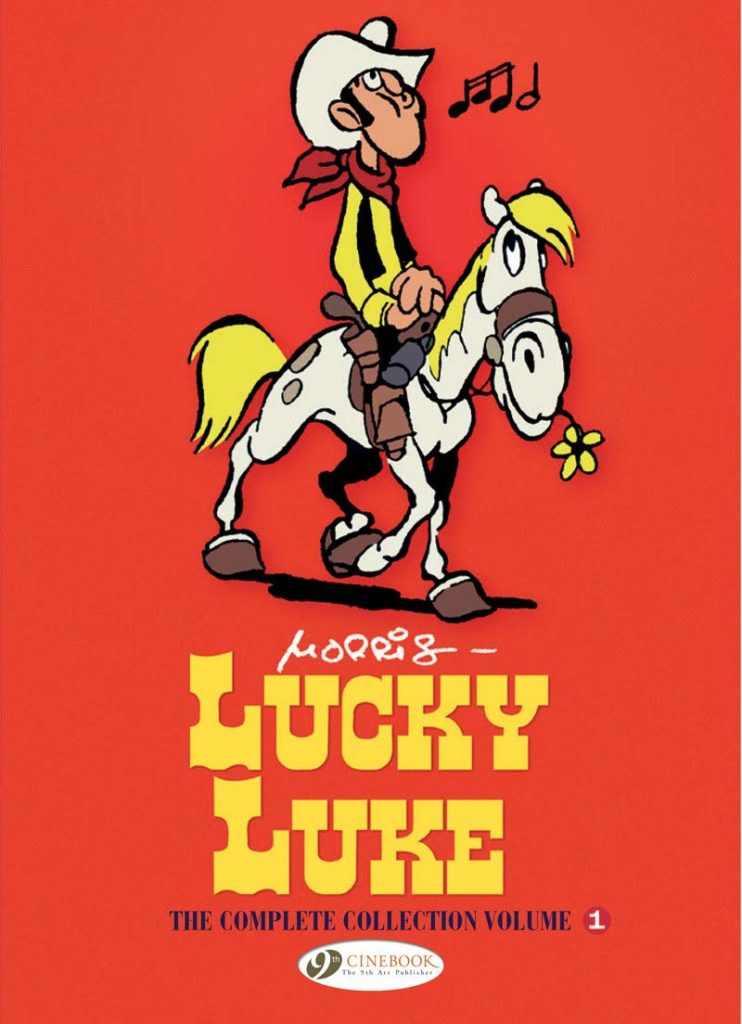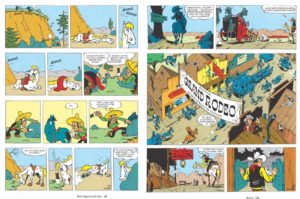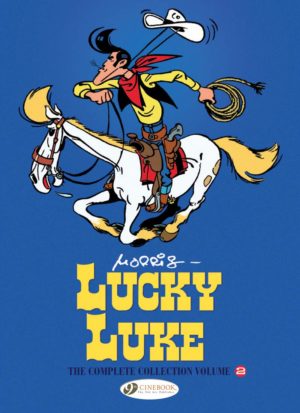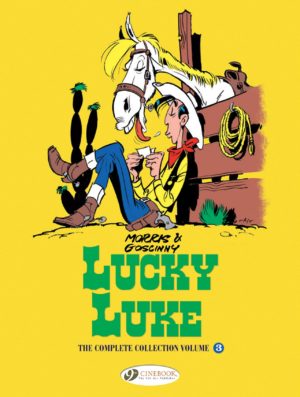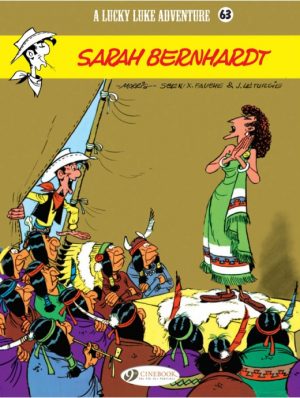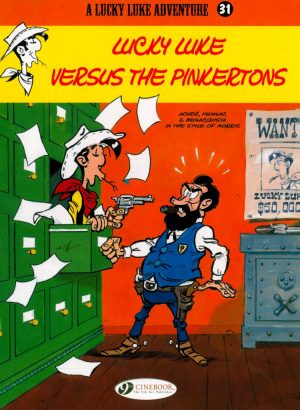Review by Frank Plowright
In Europe Lucky Luke is revered on a par with Tintin and Asterix, amusing generation after generation. It’s odd, then, that it’s taken so long to produce a definitive collection, but the Lonesome Cowboy a long way from home has now been done proud, as this isn’t just the albums cobbled together in hardcover. The three earliest publications are accompanied by over fifty pages of articles, photographs and illustrations that could be considered worth the cover price alone.
Luke was created in 1946 by Maurice De Bevere, who used the alias Morris throughout his career, and before we see any of his early Lucky Luke strips there are forty pages of essay by historians Christelle and Bertrand Pissavy-Yvernault. They cover Morris’ biography to his legendary trip to the USA and Mexico in the late 1940s just as Lucky Luke took off, quoting him extensively from interviews, and delving into his influences for Luke and the world created around him. This is accompanied by a fascinating selection of photographs, illustrations, and strips feeding from the essay.
For this collection Cinebook have resequenced the strips back to their original publication order in Spirou, so the title strip of the third collection, Arizona, is the first we read. The differences when comparing this Luke to the now familiar character are so vast that were it not for his distinctive yellow shirt and black waistcoat he could be a separate character. He’s given a big round chin and stumpy legs, and operates in a world almost without straight lines by an artist then in thrall to Disney animation. The earliest stories are also considerably removed from the Lucky Luke that’s delighted millions. Morris wrote Lucky Luke himself for the first eight years, and would develop a refined sense of pacing, but hadn’t in 1946. He’s decided from the start that his hero would appear in comedies, but he paces the stories as if animated storyboards, with the gags laboured and over-extended. They also feature an unusually fallible Luke, occasionally bushwhacked.
While the stories may be primitive by today’s standards there’s a simple elegance to Morris’ cartooning right from the start. The left sample page is one restored to Luke’s second story, having been missed from album printings of Dick Digger’s Gold Mine over the years. It may not feature Luke, but shows the sheer personality Morris managed to embed in his characters. Several further lost pages have been restored to other stories.
As was the case with Luke, Jolly Jumper is still in prototype stage. Both have been refined, but neither has developed into their final incarnation by the collection’s end. 1949’s ‘Lucky Luke Versus Cigarette Caesar’ is a visual tour de force. Morris was living in Mexico at the time he created the strip, and it’s rich with local colour, including the busiest here of the half page illustrations that became a Lucky Luke speciality. Morris worked his way up to that with occasional larger panels, the first full half occurring in Rodeo’s title strip and several gems thereafter, the best of them the cattle stampede in ‘Desperado City’. That’s also the strip in which Morris introduces his first undertaker gag, which would develop into a running joke.
The chronological presentation giving a greater perspective on Morris’ and Luke’s progression, the care taken to include long missing pages, and the illustrated contextualising essay combine to make this sum of the parts better than the individual volumes.
